My “trout” dry fly box
{{start}}
Dry fly fly fishing is very visual and at times can out fish all other methods. This selection of flies will cover most of your surface fly fishing requirements in both Australia and new Zealand.
{{end}}

{{+1}}Hackled gold ribbed hares ear{{-1}}
{{start}}
On balance I think it fishes better than the Greenwells Glory. It works equally well on running or still water and is a little more buoyant than the Greenwell Glory and is buoyant enough to support a small bead head nymph in a wet under dry team.{{end}}
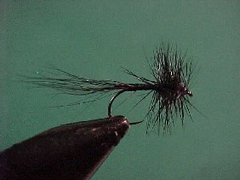
{{+1}}Black spinner{{-1}}
{{start}}
The term spinner is generally used only in the context of referring to a small number of Mayflies including Black, Red and Orange Spinners when they are both on the water and in the air. The following Spinner is a generic representation for members of the “Leptophlebiidae” family of Mayflies and the various Highland Duns & Spinners, which are members of the “Oniscigastridae” family. Hatches generally occurs between the months of October and March.{{end}}
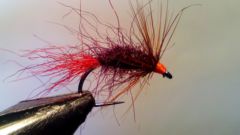
{{+1}}Claret carrot{{-1}}
{{start}}
Based on the design of the carrot fly this version is particularly appealing to fish feeding on emerging Mayfly in Tasmania's central and western lake.{{end}}

{{+1}}Plume{{-1}}
{{start}}
This is an incredible fly for delicate presentations to mayfly feeders ... the waters of the Korka had mayfly hatching but I was having trouble in finding a fly that didn’t spook them. Remembering that browns were behaving in a similar way in the training session I mentioned above I swapped over to the plume and ultimately did pretty well for the session coming in 10th out of 28 competitors.{{end}}
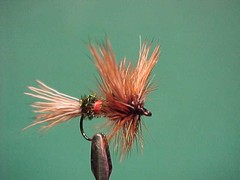
{{+1}}Royal Wulff{{-1}}
{{start}}
With origins in the 20's the Wulff is as much a style of fly as a fly in its own right. It is certainly one of the quintessential dry flies and in some shape or form you will find variants in most fly boxes. Whilst the originals were tied using elk hair tails and upright upright divided calf wings I lean toward variants that have buoyant deer hair tails and divided wings.{{end}}
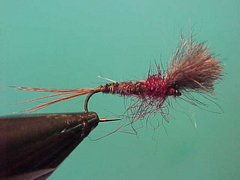
{{+1}}Possum emerger{{-1}}
{{start}}
There are plenty of possum emergers out there. Generally they have a nymph like body and then either a brush type wing or a bud type wing. I like brush type wing emergers better as dense wing traps more air and consequently they float better. The little thorax of seals fur is also good because it sheds water with a flick of the fly.{{end}}
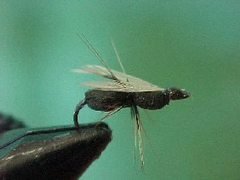
{{+1}}Foam flying ant / termite{{-1}}
{{start}}
The biggest problem with many termite and ant flies is that because you only use and only need two wraps of hackle to represent the legs they unfortunately have a tendency to sink. This foam termite whilst still looking realistic overcomes that problem.{{end}}

{{+1}}Ant – black{{-1}}
{{start}}
If it's a hot day, a warm balmy night, if water is rising over previously dry ground or almost any time for that matter you can get huge hatches of ants. They vary in colour but the dominant hatches are of black meat ants. When the fish are feeding on ants they just sup the insects down one by one often at the exclusion of all other food sources. The best technique for ant feeders is to grease your leader except for the last 60 cm or so and to cover individual fish or place your fly amongst the naturals in the path of feeding fish.{{end}}
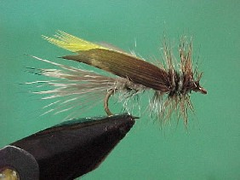
{{+1}}Chatto’s yellow winged hopper{{-1}}
{{start}}
As the name implies this hopper is my representation of the natural of the same name. Its tied in the same way as a stimulator except that a yellow under wing and feather slip wings replace the deer hair wing of the stimulator. It's a good hopper pattern to tie on because it floats in the surface film much the same way as the unfortunate natural does and it is reasonably visible.{{end}}














